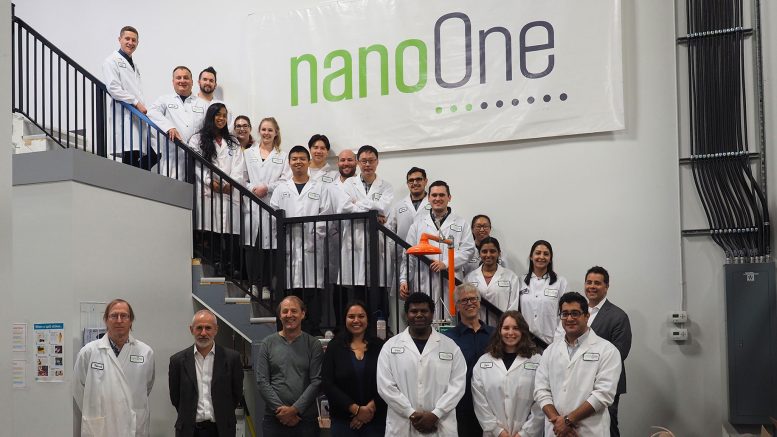Rio Tinto (NYSE: RIO; LSE: RIO; ASX: RIO) has announced a US$10-million investment in Nano One Materials (TSX: NANO), a technology company with a patented process for production of cathode materials used in lithium ion batteries.
Under the agreement, Nano One will issue 4.6 million common shares or about 4.9% of the company’s issued and outstanding shares to Rio Tinto for its investment. The deal also includes a study of Rio Tinto’s battery metal products, such as iron powders from its Fer et Titane facility in Quebec as feedstock to produce Nano One’s cathode materials.
“It is a very important strategic investment in the company because it really shows our investment community and other partners that there is a serious recognition of the technology that we have developed and are bringing forward,” Dan Blondal, CEO of Nano One, said at a press conference while announcing the agreement.
“This turns a page for Nano One and puts us on the international stage with one of the largest companies in the world.”

A battery production factory. (Image courtesy of Ganfeng Lithium.)
Didier Arseguel, VP Technology of Rio Tinto Iron and Titanium said the investment was part of the company’s plans to become a major stakeholder in the battery sector.
Nano One’s patented ‘One-Pot Process’ and metal to cathode-active material technologies enable sulphate-free lithium-ion cathode-active materials that are rich in nickel, iron and manganese to be made economically from battery metal sources. It also results in a smaller environmental footprint, the company says.
The technology applies to all lithium-ion batteries used in electric vehicles, for which demand has increased in recent years.
On a roll
The agreement with Rio Tinto is the third deal that Nano One has clinched in less than three weeks’ time.
On May 25, Nano One announced the acquisition of all the outstanding shares of Johnson Matthey Battery Materials for about $10.2 million. The deal will give Nano One control of the Candiac production facility in Quebec, which has a 2,400 tonne per year capacity and supplies lithium iron phosphate cathode material to the battery sector.
The investment from Rio Tinto will be directed towards this acquisition in addition to developing Nano One’s supply chain.
Also in May, Nano One announced it and BASF have agreed to co-develop a process with reduced byproducts for commercial production of next-generation cathode active materials (CAM). The process will be based on BASF’s HEDTM-family of advanced CAM and using Nano One’s patented One-Pot process and metal direct to CAM (M2CAM) technologies.
At a press conference for the most recent announcement on June 9, Natural Resources Minister Jonathan Wilkinson said that the investment was an example of the “collaboration” needed for Canada to compete in the battery minerals sector.
“Minerals such as graphite, cobalt, and lithium are set to skyrocket by up to 500% in terms of demand by 2050…” Wilkinson said, adding that Canada is well positioned to develop a globally competitive supply chain.
He also said that it was important for democratic nations like Canada to develop its resources in order to provide access to strategic critical minerals at a time when China and Russia control a large share of critical minerals.
At press time in Toronto, shares of Nano One Materials were trading at $3.06, up 62¢ or 25.4%, within a 52-week trading range of $1.30 and $5.09.


Be the first to comment on "Nano One ‘turns a page’ with $10M investment from Rio Tinto "